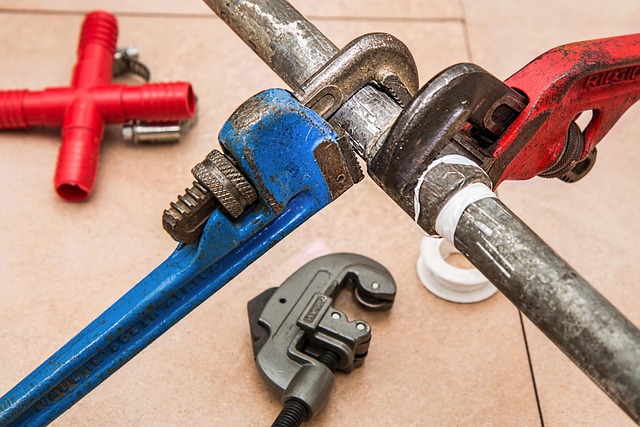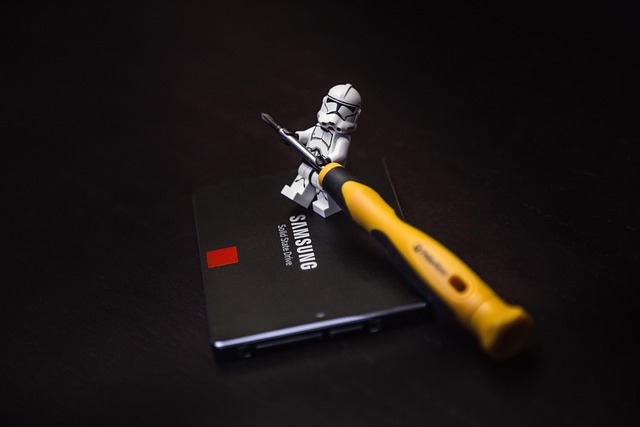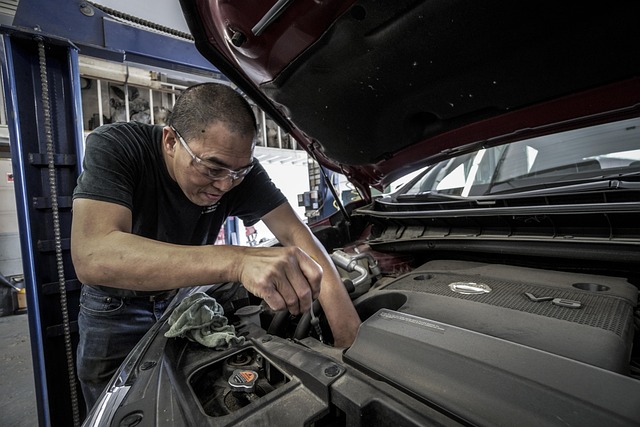Selecting DIY auto repairs for basic tasks like replacing door handles, brake pads, and air filters builds confidence and saves money. Prioritize safety with essential tools and protective gear, and organize them in a dedicated toolbox. Cost-saving and empowering, these repairs start with simple maintenance like changing oil and checking tire pressure.
“Unsure where to start when it comes to auto body repairs? This comprehensive guide is your go-to resource for understanding and tackling basic DIY auto body repairs. From learning about essential tools and safety precautions to mastering common fixes, we break down the process step-by-step. Empower yourself with knowledge and take control of your vehicle’s upkeep by selecting the right DIY auto repairs.”
- Understanding Basic Auto Body Repairs
- Tools and Safety Gear for DIY Projects
- Step-by-Step Guide to Common Fixes
Understanding Basic Auto Body Repairs

Understanding Basic Auto Body Repairs
When it comes to auto body repairs, many car owners feel intimidated, but selecting DIY auto repairs can be a viable option for those with basic skills and knowledge. Starting with simple tasks like replacing door handles or brake pads (diy brake pad replacement guide) can build confidence and save money. There are numerous online resources and tutorials available, including detailed diy car repair guides, that walk through the steps of common repairs, making it easier than ever to tackle these projects on your own.
Additionally, restoring old car interiors is another project many DIY enthusiasts take on. With a bit of patience and the right tools, you can refresh the look and feel of your vehicle’s interior. By learning basic auto body repair techniques, you gain control over your car’s upkeep and may even discover hidden talents along the way.
Tools and Safety Gear for DIY Projects

When tackling DIY auto body repairs, having the right tools and safety gear is paramount. For most basic projects, such as selecting DIY auto repairs like changing oil yourself or repairing a loose steering wheel, you’ll need a few essential items. Invest in a good set of socket wrenches, screwdrivers (both flathead and Phillips), pliers, and a jack with stands for lifting and supporting your vehicle safely. Don’t forget protective gear including safety glasses, gloves, and ear protection to shield yourself from debris and noise.
Additionally, consider tools specific to auto repairs like wire strippers, a multimeter for checking electrical connections (including car electrical repairs DIY), and a torch for reaching tight spaces. Keeping these tools organized in a dedicated toolbox will make your repair process smoother and more efficient, ensuring you’re prepared for whatever comes your way on the road to mastering select DIY auto repairs.
Step-by-Step Guide to Common Fixes

Choosing DIY auto repairs can be a rewarding way to save money and learn new skills. Start with simple tasks like replacing your car’s air filter, which is crucial for maintaining engine performance and fuel efficiency. Locate the air filter housing, usually in the engine compartment, and follow instructions on the replacement kit to install the new filter. This process typically involves removing the old filter, cleaning the housing, and inserting the new filter securely.
Another common repair that many drivers can handle themselves is changing their car’s oil. Gather the necessary tools, including an oil drain pan, a jack, and jack stands, and park your vehicle on a level surface. Place the drain pan beneath the oil plug, secure your vehicle with jack stands, and unscrew the plug to allow the oil to drain. After replacing the oil plug, pour in fresh oil according to your vehicle’s specifications, and reattach any protective caps. For issues like low tire pressure, use a tire gauge to check and adjust pressure as needed, ensuring safety and optimal performance.
For those new to auto body repairs, selecting DIY projects can be a rewarding way to learn essential skills and save money. By understanding basic techniques, investing in proper tools and safety gear, and following step-by-step guides for common fixes, you can tackle minor auto body issues with confidence. Remember, while DIY repairs offer benefits, complex or structural damage may require professional assistance.
